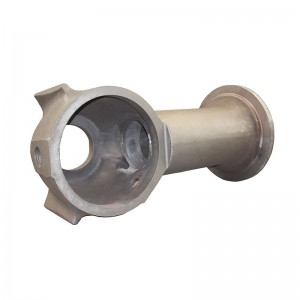- Afrikaans
- Albanian
- Amharic
- Arabic
- Armenian
- Azerbaijani
- Basque
- Belarusian
- Bengali
- Bosnian
- Bulgarian
- Catalan
- Cebuano
- China
- China (Taiwan)
- Corsican
- Croatian
- Czech
- Danish
- Dutch
- English
- Esperanto
- Estonian
- Finnish
- French
- Frisian
- Galician
- Georgian
- German
- Greek
- Gujarati
- Haitian Creole
- hausa
- hawaiian
- Hebrew
- Hindi
- Miao
- Hungarian
- Icelandic
- igbo
- Indonesian
- irish
- Italian
- Japanese
- Javanese
- Kannada
- kazakh
- Khmer
- Rwandese
- Korean
- Kurdish
- Kyrgyz
- Lao
- Latin
- Latvian
- Lithuanian
- Luxembourgish
- Macedonian
- Malgashi
- Malay
- Malayalam
- Maltese
- Maori
- Marathi
- Mongolian
- Myanmar
- Nepali
- Norwegian
- Norwegian
- Occitan
- Pashto
- Persian
- Polish
- Portuguese
- Punjabi
- Romanian
- Russian
- Samoan
- Scottish Gaelic
- Serbian
- Sesotho
- Shona
- Sindhi
- Sinhala
- Slovak
- Slovenian
- Somali
- Spanish
- Sundanese
- Swahili
- Swedish
- Tagalog
- Tajik
- Tamil
- Tatar
- Telugu
- Thai
- Turkish
- Turkmen
- Ukrainian
- Urdu
- Uighur
- Uzbek
- Vietnamese
- Welsh
- Bantu
- Yiddish
- Yoruba
- Zulu
Dec . 09, 2024 17:33 Back to list
Custom Precision Metal Casting Solutions for OEM Applications and Industries
Understanding OEM Metal Casting The Backbone of Custom Manufacturing
In the contemporary manufacturing landscape, Original Equipment Manufacturers (OEMs) are increasingly reliant on specialized processes to produce high-quality components and products. One such critical process is metal casting, an age-old method that has evolved significantly over time. This article delves into the world of OEM metal casting, exploring its significance, processes, and applications.
What is OEM Metal Casting?
OEM metal casting refers to the process where manufacturers produce metal parts that are designed, specified, and branded by a particular original equipment manufacturer. Unlike standard components, OEM parts are often custom-designed to fit the specific requirements of a product, ensuring compatibility and performance. This bespoke nature of OEM metal casting allows businesses to maintain a competitive edge in their respective markets.
The Significance of Metal Casting in OEM Manufacturing
Metal casting is vital in OEM manufacturing for several reasons
1. Complex Shapes and Designs Metal casting enables manufacturers to create intricate shapes that would be difficult or impossible to achieve through other methods like machining. This feature is particularly beneficial for OEMs that require unique designs tailored to their products.
2. Material Versatility Various metals and alloys can be used in the casting process, including aluminum, iron, bronze, and magnesium. The choice of material can significantly impact the performance, weight, and cost of the final product.
3. Cost-Effectiveness For large-scale production, metal casting is often more economical than other manufacturing processes. The ability to create many parts from a single mold reduces manufacturing costs per unit.
4. Strength and Durability Cast metals can exhibit excellent mechanical properties, making them suitable for high-stress applications. OEMs often require parts that endure rigorous conditions, and metal casting can provide the durability needed.
The Metal Casting Process
oem metal casting

The OEM metal casting process typically involves several key steps
1. Design and Prototyping The process begins with the design of the part, often created using computer-aided design (CAD) software. Prototypes may be developed to test the design's functionality and fit.
2. Mold Creation A mold is then created based on the part's design. Molds can be made from various materials, including sand, metal, or ceramic, depending on the casting technique used.
3. Metal Melting and Pouring The selected metal is melted in a furnace and poured into the prepared mold. The temperature and methods of melting can vary based on the type of metal being used.
4. Cooling and Solidifying Once poured, the metal is allowed to cool and solidify in the mold. This stage is crucial, as it determines the final properties of the cast part.
5. Finishing Processes After cooling, the mold is removed, and the casting may undergo additional finishing processes, such as machining, painting, or surface treatment, to meet the required specifications and aesthetic standards.
Applications of OEM Metal Casting
The applications of OEM metal casting are vast and varied. Industries such as automotive, aerospace, and construction rely heavily on custom-cast parts. For example, automotive manufacturers use metal casting to produce engine blocks, transmission cases, and brackets. Similarly, the aerospace sector requires lightweight but durable components, often achieved through specialized aluminum or titanium casting processes.
Moreover, the growing trend towards customization and personalization in consumer products has led to an increased demand for OEM metal casting in various sectors, including electronics and appliances.
Conclusion
OEM metal casting stands as a cornerstone of modern manufacturing. Its ability to create complex, durable, and cost-effective components makes it an invaluable process for OEMs across multiple industries. As technology continues to advance, including the integration of smart manufacturing practices and better materials, the importance of metal casting in OEM production will only grow. Whether it's designing the next generation of electric vehicles or crafting intricate machine components, OEM metal casting will undoubtedly play a crucial role in shaping the future of manufacturing.
-
8mm Thin-Walled Cast Steel Manhole Cover Pallet Bottom Ring | Durable
NewsAug.04,2025
-
Premium Cast Iron Water Main Pipe: Durable, Corrosion-Resistant
NewsAug.03,2025
-
Durable Cast Iron Water Mains | AI-Optimized Systems
NewsAug.02,2025
-
High-Efficiency Propane Boiler for Baseboard Heat | Save Energy
NewsAug.01,2025
-
Premium Source Suppliers for Various Gray Iron Castings
NewsJul.31,2025
-
Durable Cast Iron Water Main Pipes | Long-Lasting
NewsJul.31,2025


